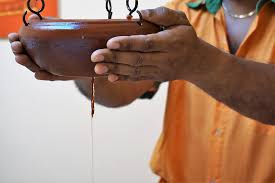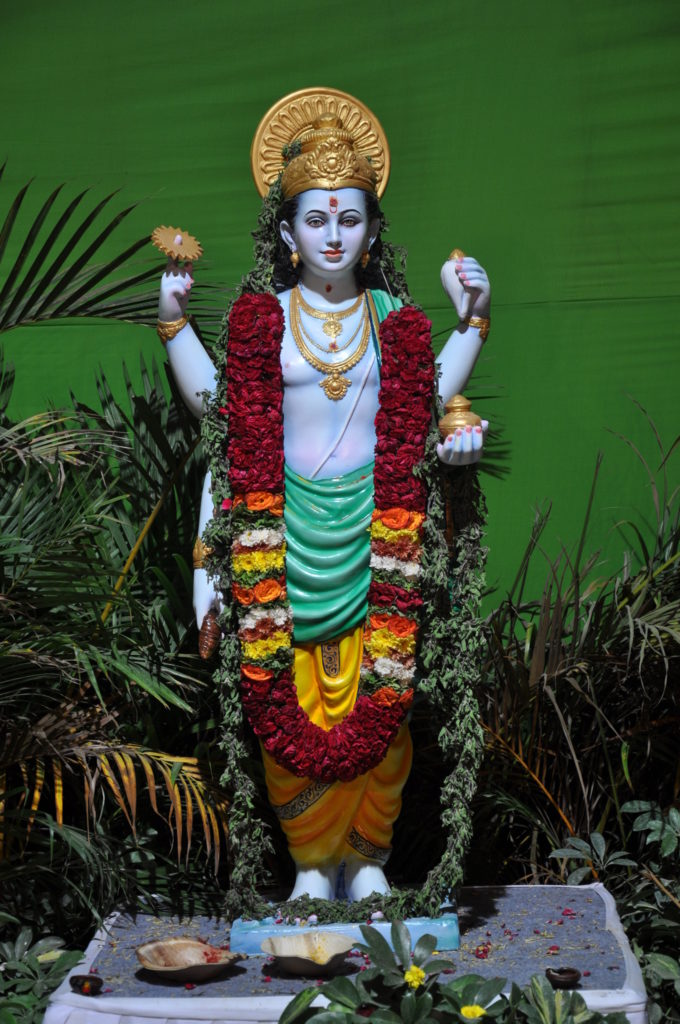 What is Ayurvedic Therapy?
What is Ayurvedic Therapy?
Ayurvedic therapy is an alternative and holistic healing modality which depicts the age old therapeutic ancient wisdom of India. Ayurvedic therapy therefore finds its magnitude with providing an individual with absolute oneness with Nature.
Principles of Ayurvedic therapy
- In Ayurvedic therapy the very first principle in treating a disease is to do away with the basic cause of the disease, and also no new ailment should emerge as a consequence. Thus Ayurvedic therapy renders a complete holistic approach where the disease
is eradicated from its roots. - Ayurvedic therapy insists that medicine be centered at the patient, rather on the disease. The mind, body and soul are considered as a tripod and the entire word is sustained by their combination.
- As Ayurvedic therapy deals with the preparations only from herbs and natural resources, this is basically harmless therapeutic therapy with least or no side effects.
Significance of Ayurvedic therapy
The importance of Ayurvedic therapy can be acknowledged by the mere fact that a whole Veda has been dedicated to it. Also, Ayurveda is a treasure which is being widely
explored and supplemented so as to provide every individual a life full of health, vigor and vitality.
Ayurvedic Therapy Essentials
Whenever you take to Ayurvedic therapy, you need to keep few qualities of the Ayurvedic physician, Ayurvedic herb or the Ayurvedic medicinal formulation, the care taker and the patient. This would not only create essential awareness about the Ayurvedic therapy, but at the same time make the ancient Ayurvedic disciplines all the more significant and established. The 5000 years old Ayurvedic science has virtually documented itself on four foundations that redeem necessary advantage for treatment of a patient. These have been mentioned as Chatushpada or the four feet of Ayurvedic therapy. Thus, the Ayurvedic therapy recognizes importance of the Ayurvedic physician, Ayurvedic medicine, Ayurvedic medical attendant and the patient to whom Ayurvedic therapy is being provided.

Vaidya or Ayurvedic physician
First and foremost the physician who is dealing with your disease needs to be intelligent and wise. This means that the Ayurvedic physician who is providing Ayurvedic therapy needs to be well versed with the basic concept of Ayurvedic wisdom.
Ayurveda Medicine
Ayurveda renders Ayurvedic medicine or the herbo-mineral drug to hold an equally important position in Ayurvedic therapy. The ancient science of Ayurvedic healing is holistic and redeems natural perspective; the medicinal preparation is bound to be materializing from the nature.
Medical Attendant
A medical attendant finds his worth in Ayurvedic therapy as one who is the precise care taker and reliever for the patient being treated. Therefore it has been specified in Ayurvedic text that the attendant or care taker has to be affectionate and reliable, especially for the patient he looks after.
The patient
The patient to whom Ayurvedic therapy is being offered should be affluent enough to be able to manage his medical bills and needs to follow the instructions of Ayurvedic physician per se.
Virtue of Ayurvedic therapy
Ayurvedic therapy is regarded as Sukha Chikitsa which means that this is the pure treatment that the Ayurvedic therapy has to offer in process of which no other ailment is formed. Ayurvedic therapy is thus a holistic treatment science which incorporates precise methodologies and therapies which target the overall wellness and longevity of an individual. Within the circumference of the absolute ancient wisdom, Ayurvedic therapy works
in proximity with other alternate therapies like yoga, meditation and Naturopathy.
Panchkarma – The Five Cleansing Techniques of Ayurvedic Therapy
The techniques of ‘Panchkarma’ are an integral part of Ayurvedic therapy wherein the patient is made to undergo five specific therapeutic actions. These actions are mainly based on the principle of thorough cleansing of the body systems which would in the long run help to bring the vitiated doshas into their balanced and customary state. In the Ayurvedic therapy, ‘Panchkarma’ as specified by its name means five methods to cure the disease.
- Vamana – To cause vomiting
- Virechana – To cause purgation
- Shirovirechana – Nasal Errhines
- Asthapan Vasti – Enema to push medicines into colon
- Anuvasan Vasti – Oil enemas.
Vata, Pitta and Kapha Physiology in Ayurvedic therapy
Ayurvedic therapy lays emphasis on the three doshas or humors of the body. This is because when rendering Ayurvedic therapy, the main focus of Ayurvedic physician be to probably perform pulse diagnosis or Nadi Pareeksha so as to substantiate the imbalanced states of Vata or the air, Pitta or the fire and Kapha or the phlegm doshas imbibed in your body. Ayurvedic therapy portrays that when the three doshas are present in their relative balanced states, they reason for the natural well-being of an individual. Nevertheless, as and when the three doshas get to become imbalanced, this means that either they are decreased or increased than their normal limits. In both these stages disease is certain to manifest.
Diagnosis in Ayurvedic Therapy
There are a few norms that are considered necessary during diagnosis when providing Ayurvedic
therapy for the purpose of healing as well as curing a disease.
- Darshana – Visual inspection is performed thoroughly at first.
- Sparshana – This indicates noticing the physical changes by means of touch or palpation.
- Prashana – Thorough interrogation is undertaken which involves not only the patient but also his/her close relations.
- Nadi Pareeksha – Pulse diagnosis is authentically supportive in dealing with both
the disease as well as the diseased one. - Nidana – Considering of the etiological factors that reason for development of the ailment.
- Poorvaroopa – The particular symptoms that appear before the disease shows up fully and manifests are also taken into consideration.
- Lakshana – The intricate signs and symptoms that show up are examined.
- Upshaya – The diagnostic tests that entail
medicinal drugs and formulations, Ayurvedic diet and lifestyle. - Samprapti – This signifies prognosis of the ailment.
About the Author
Dr Sonica Krishan is Author and Speaker in the areas of Healthy and Joyous Living through Ayurveda, Meditation, Yoga and other Contemplative practices. She is a leading Ayurveda Professional in India. She is also Health Writer, Columnist, Editor, Ayurveda Consultant and Holistic Healing Coach. Dr Sonica is open for National as well as International Collaborations with interested people / institutions in fields of Ayurveda, Meditation and Yoga.
Dr Sonica Krishan’s Books are available at Amazon
Related Posts
Ayurveda Therapy For Acne And Pimples
Ayurveda Treatment – The Ancient Indian Science of Healing





I discovered your blog site on google and check a few of your early posts. Continue to keep up the very good operate. I just additional up your RSS feed to my MSN News Reader. Seeking forward to reading more from you later on!…
Keep on writing and sharing with us all, splendid job!
Think I should test with you here. Which is not one thing I often do! I get pleasure from reading a submit that can make folks think. Also, thanks for permitting me to comment! Very nice blog. Thanks Writer 🙂
Oh my goodness! a tremendous article dude. Thank you However I’m experiencing situation with ur rss . Don’t know why Unable to subscribe to it. Is there anybody getting identical rss problem? Anybody who knows kindly respond. Thnkx
Hmm it seems like your website ate my first comment (it was extremely long) so I guess I’ll just sum it up what I had written and say, I’m thoroughly enjoying your blog. I too am an aspiring blog writer but I’m still new to the whole thing. Do you have any points for first-time blog writers? I’d genuinely appreciate it.
You have remarked very interesting points! PS decent site.
Please let me know if you’re looking for a article writer for your blog. You have some really great posts and I feel I would be a good asset. If you ever want to take some of the load off, I’d absolutely love to write some material for your blog in exchange for a link back to mine. Please send me an email if interested. Thanks!
hi! I like your writing so much! percentage we keep in touch more about your article on AOL? I require a specialist on this space to resolve my problem. May be that is you! Looking ahead to see you.
Having read this I think it is really very informative. I appreciate you taking the time and effort to put this article together. I once again find myself spending way to much time both reading and commenting. But so what, it was still worth it!
Whats up very cool site!! Man .. Excellent .. Superb .. I’ll bookmark your website and take the feeds additionally?KI’m happy to find a lot of helpful info here within the post, we want develop extra techniques in this regard, thanks for sharing. . . . . .
An interesting dialogue is value comment. I believe that you should write more on this matter, it might not be a taboo topic but usually individuals are not enough to speak on such topics. To the next. Cheers
Lovely just what I was searching for.. about Ayurveda Therapy. Thanks dear author for taking his clock time on this one.
I like this weblog very much, Its a really nice spot to read and find info. Please carry on with writing and sharing. Kudos :))
Lovely just what I was searching for. Thanks to the author for taking time on this one.
Pretty nice post. I just stumbled upon your blog and wished to say that I’ve really enjoyed browsing your weblog posts. In any case I will be subscribing on your rss feed and I hope you write once more very soon!
Would love to perpetually get updated great web site! THANKS DOC
There is noticeably a bundle to know about this. Now Ayurvedic can be understood by one and all. I assume you made certain good points in features also.
Your style is so unique compared to many other people. Thank you for publishing when you have the opportunity, Guess I will just make this bookmarked!!
Hello there! I simply would like to give you a huge thumbs up for your excellent information youve got here on this post. I will be returning to your site for more soon.
good post as always! But…Never knew this, thanks for letting me know.
Thank you for helping out, great information. As we understand that – The health of nations is more important than the wealth of nations.
Its wonderful as your other content : D, thankyou for putting up these blogs! Regards,